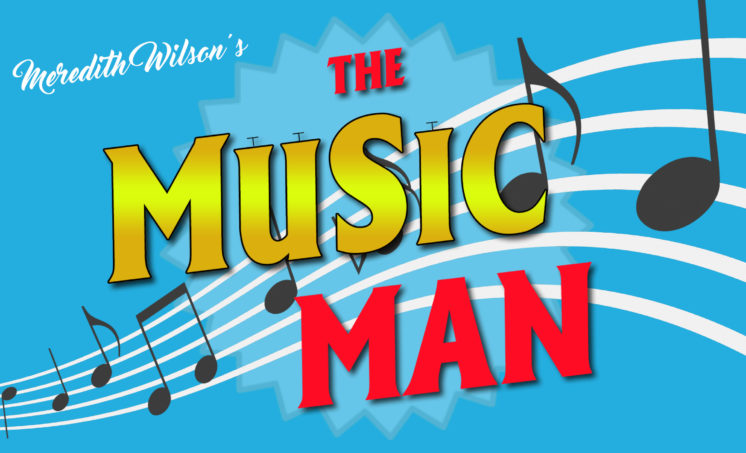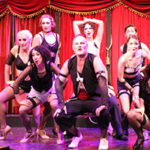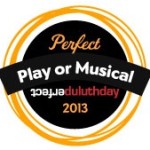Music Man, on Three Levels
I sat in the balcony to watch a preview (or Sponsor Night) performance of The Music Man by the Duluth Playhouse at the Norshor Theatre. The performance was enjoyable, the text is enjoyable, if complicated for the 21st century, and as this was my first trip into the new Norshor, I have some thoughts about that.
Level 1: This performance
Actual theater critics will no doubt tell you whether this performance was awesome as theater. Here’s what I know:
I smiled, a lot. I smiled at barbershop quartets and dancing, at the absolute surreality of people breaking out into song and dance on a train, in a library. I smiled at actors given a plot that moves toward you like a slow moving train, along a fixed track. You can see it coming, you know exactly where it’s going, and you still smile, smile, smile for nearly three hours.
I love the show, I recommend everyone who wants to smile to spend time watching the Music Man.
Level 2: The text
It’s hard to watch this without recognizing that Music Man sets tropes that I learned from animated TV …
The Monorail song borrows from this musical …
Then Simpsons-writer Conan O’Brien was clearly cribbing from this song in Music Man …
Conan acknowledges this debt in interviews and in this performance:
But the borrowings are even more direct than this Simpsons reference. Even more directly, the Music Man’s song about Shipoopi was literally taken up in Family Guy.
I’m not sure what it would mean to come to The Music Man with fresh eyes.
In a small way, I wonder whether living in our current political era hurts my response, too. In one way, The Music Man is the story of an opportunist, narcissistic salesman who takes advantage of the residents of small towns. Our salesman creates anxiety, then he promises to resolve it by taking money from those small-town salt-of-the-earth types he swindles.
Those small-town residents are bristling with a kind of Iowa pride that almost makes it feel OK to see them swindled. The librarian and music teacher, who totally knows better, enables the swindler’s schemes, perhaps because she is, sometimes, vaguely disdainful of her Iowan neighbors. By omission, she lies to support the lying salesman. Her love, somehow, is supposed to redeem him.
And both she and the town somehow manage to convince themselves that his lies were what they needed. Looking forward, they believe their untutored children will somehow learn what they were never taught.
PDD is not a political space, and The Music Man is not a political play, so the political resonances I see in that way of reading the play are just in me.
Level 3: The space
I don’t have a long history with the Norshor, but I have a history. I saw Polara play there in the 1990s, I think. This is so long ago, Polara still has a MySpace page.
This was in the time when there were movies and I think improv comedy in the mezzanine and loud music in the mainstage.
I saw Low play there in the late “aughts,” at an October show, I think, too — the seats were removed toward the front, a place to dance to get loud. I missed the Orpheum and Norshor Experience moments.
I’m just going to say it; it’s likely to be awkward. I miss my Norshor. I miss the space that was too big for a local rock show, that felt cavernous, the floor cold (was concrete exposed when the seats were removed? I can’t recall). The mezzanine bar was charming, the concessions and tickets were something you walked past as you entered the theater, because staffing a box office separate from a popcorn salesman was impossible based on those revenues.
Here is what the old Norshor felt like — it felt like what Duluth felt like to me. To me, when Duluth was a vacation space (when I lived in the Twin Cities in the 1990s) and when I first moved here in 2005. I felt like there were two ways to encounter Duluth:
- One way to encounter Duluth was the imaginary playland written over Duluth, called Canal Park. In my heart, then and now, most of Canal Park felt like Duluth’s version of the Mall of America: a manufactured experience, largely for Other People.
- The other way was the way I preferred — Superior Street was, back then, the place where the town tried to make do with the hand-me-downs of the previous generation. Carlson’s Books was that legacy made visible: some of the books had clearly been on the shelves of that shop longer than I had been alive. There were high-traffic areas, where copies of High Times and pornography were watched by the shopkeep, and there were copies of Lake Superior Magazine near the front for the accidental tourist who made it all the way up from the Canal. The store was literally tens of thousands of books, but it was a few hundred square feet that generated most of the revenue. The Norshor was similar — thousands of square feet, but hundreds of square feet generated most of the revenue. Like a teen boy trying hard to wear the shirts handed down from adult male relatives, Duluth was struggling to figure out how to “wear” the buildings created by the Zenith City of millionaires a hundred a years ago.
So — has Duluth grown into that infrastructure? Fitger’s is bustling, the Norshor is reopened without adult entertainment, there is a brewery every thirty feet in this town.
Or did the illusions of Canal Park just extend from the Canal onto Superior Street, maybe all the way into the near West Side, running from the Norshor to OMC. I don’t know.
Before the performance, one of the speakers said the Norshor rivals theaters in major metropolitan cities. As I left the Norshor, I craved the Renegade, the black box innovation on folding chairs of the Zuccone. That feels like Duluth scale to me.
The Norshor will work because there are enough people who want this kind of theatrical experience. Because locals want this. Because Duluth has become a city that can sustain it.
I don’t know why, but I craved, for a moment, the city that struggled instead of the city that has finally arrived, finally “made it.”
Recommended Links:
Leave a Comment
Only registered members can post a comment , Login / Register Here














No Comments